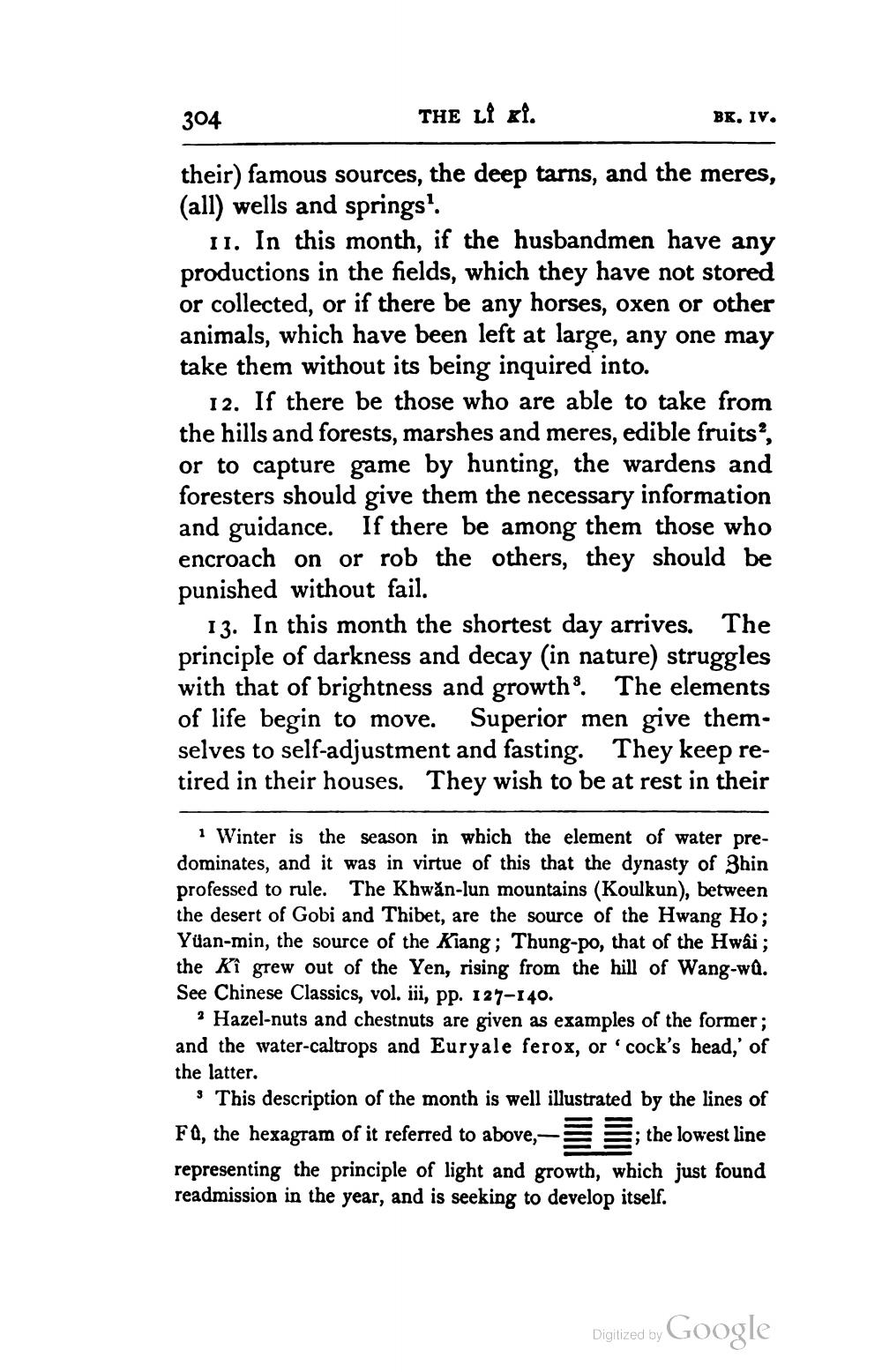________________
304
THE Lł ki.
BK, IV.
their) famous sources, the deep tarns, and the meres, (all) wells and springs?.
11. In this month, if the husbandmen have any productions in the fields, which they have not stored or collected, or if there be any horses, oxen or other animals, which have been left at large, any one may take them without its being inquired into.
12. If there be those who are able to take from the hills and forests, marshes and meres, edible fruits, or to capture game by hunting, the wardens and foresters should give them the necessary information and guidance. If there be among them those who encroach on or rob the others, they should be punished without fail.
13. In this month the shortest day arrives. The principle of darkness and decay (in nature) struggles with that of brightness and growth. The elements of life begin to move. Superior men give themselves to self-adjustment and fasting. They keep retired in their houses. They wish to be at rest in their
1 Winter is the season in which the element of water predominates, and it was in virtue of this that the dynasty of Bhin professed to rule. The Khwăn-lun mountains (Koulkun), between the desert of Gobi and Thibet, are the source of the Hwang Ho; Yuan-min, the source of the Kiang; Thung-po, that of the Hwai; the Kî grew out of the Yen, rising from the hill of Wang-wa. See Chinese Classics, vol. iii, pp. 127-140.
? Hazel-nuts and chestnuts are given as examples of the former; and the water-caltrops and Euryale ferox, or 'cock's head,' of the latter.
* This description of the month is well illustrated by the lines of F4, the hexagram of it referred to above, the lowest line representing the principle of light and growth, which just found readmission in the year, and is seeking to develop itself.
Digitized by Google




